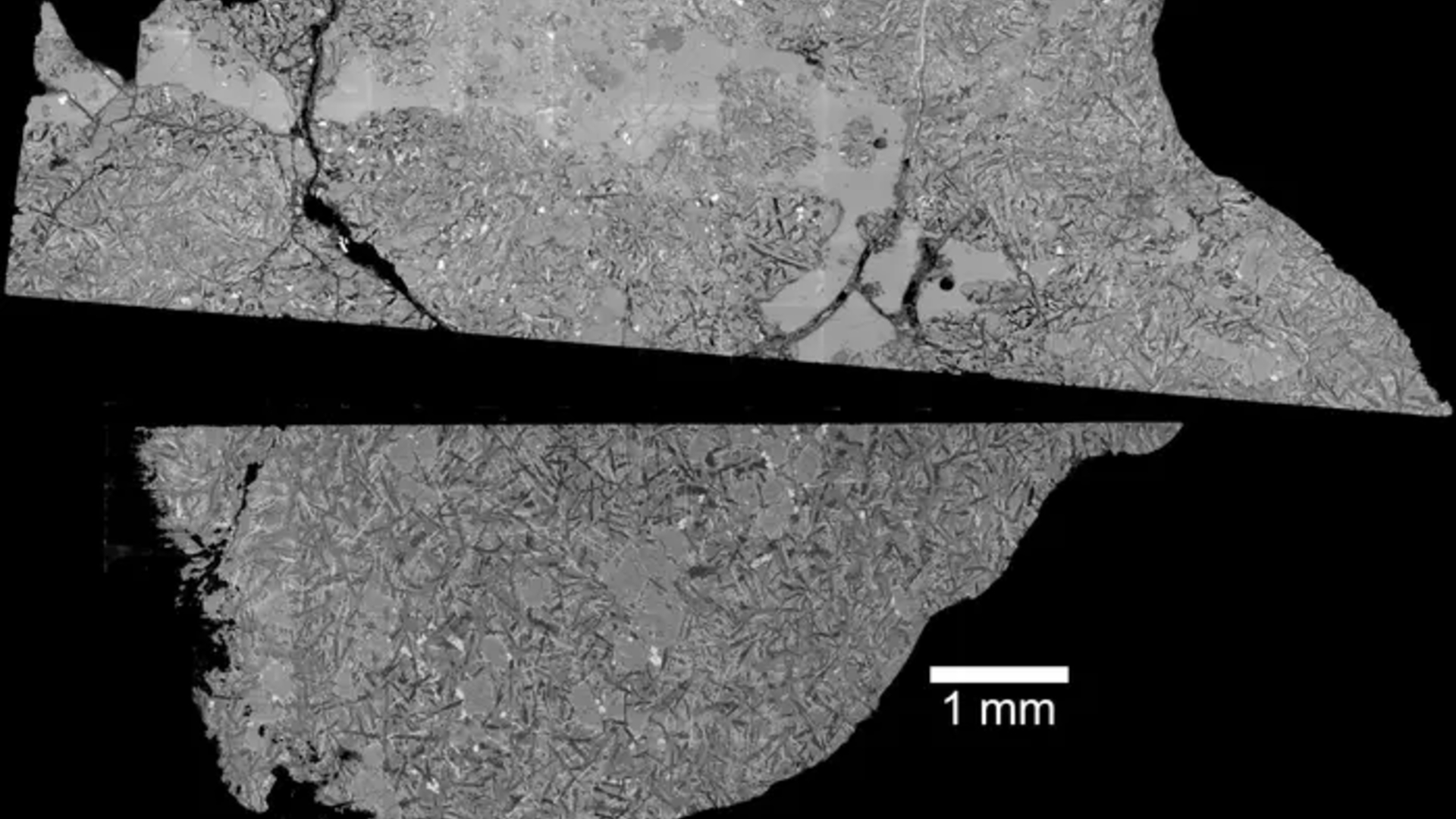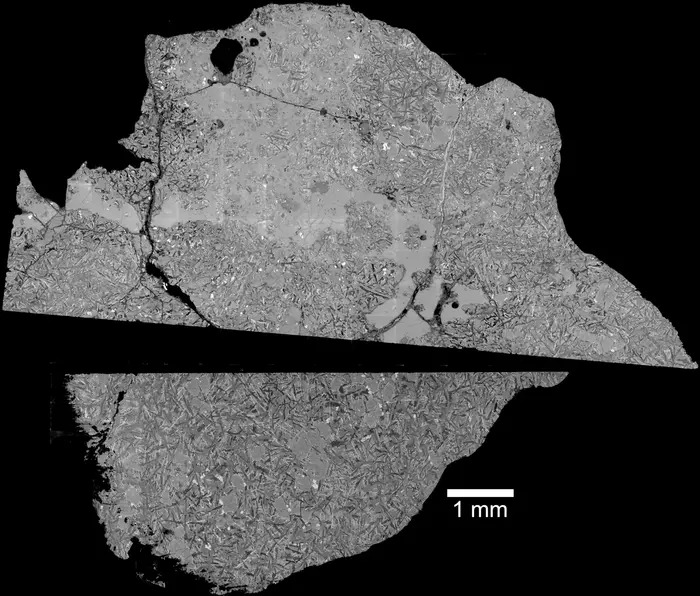2 billion-year-old moon rock found in Africa reveals secret lunar history
The meteorite is the only lunar sample that we have from this forgotten period of the moon.

A meteorite that fell from the moon and was found in Africa is a rare volcanic rock dating from a time period in lunar history that scientists know little about.
The 311-gram space rock was discovered in 2023 and is known as the Northwest Africa 16286 meteorite — and based on the decay of the lead isotopes that it contains, its formation has been dated to about 2.35 billion years ago.
"Its age and composition show that volcanic activity continued on the moon throughout this timespan, and our analysis suggests an ongoing heat-generation process within the moon, potentially from radiogenic elements decaying and producing heat over a long period," said lead researcher Joshua Snape of the University of Manchester in a statement.
The meteorite is an important piece in the jigsaw that is the moon's history, filling-in an almost billion-year-long gap in our knowledge. The meteorite is much younger than samples brought back to Earth by NASA's Apollo missions, the Soviet Union's Luna missions and China's Chang'e 6 mission, all of which range between 3.1 billion and 4.3 billion years old, but older than the 1.9-billion-year-old rocks returned by Chang'e 5.
Crucially, meteorite 16286 has a volcanic origin, with geochemical analysis showing that it formed when a lava flow from deep within the moon vented onto the surface and solidified. It contains relatively large crystals of a mineral called olivine, moderate levels of titanium and high levels of potassium. Its lead isotopes also point to a volcanic source deep underground that has an unusually high uranium-to-lead ratio (the lead being a decay product of uranium). This abundance of uranium, and the heat it produced as it underwent radioactive decay, is a potential clue as to what was keeping volcanism going a billion years after the moon's main bouts of volcanism had ceased.
There are only 31 volcanic lunar rocks that have been found on Earth in the form of meteorites, and meteorite 16286 is by far the youngest.
"Moon rocks are rare, so it's interesting when we get something that stands out and looks different to everything else," said Snape.
Breaking space news, the latest updates on rocket launches, skywatching events and more!
The meteorite is more evidence that volcanism continued throughout this period on the moon; Chang'e 5 has found such evidence in its samples from the moon's farside of volcanism in the past 123 million years. Together, these discoveries are transforming what we thought we thought we knew about the moon's volcanism and how the moon has remained geologically active, at least in bursts, almost to the present day.
The next step is to pinpoint the meteorite's origin on the moon: likely a crater blasted into the surface by an impact that ejected the meteorite long ago. Once identified, it will be a prime location for a future sample-return mission to learn more about lunar volcanism during this little-known period, from which so few samples exist.
Snape presented the findings at the world's premier geochemistry meeting, the Goldschmidt Conference in Prague held between July 6 and July 11.

Keith Cooper is a freelance science journalist and editor in the United Kingdom, and has a degree in physics and astrophysics from the University of Manchester. He's the author of "The Contact Paradox: Challenging Our Assumptions in the Search for Extraterrestrial Intelligence" (Bloomsbury Sigma, 2020) and has written articles on astronomy, space, physics and astrobiology for a multitude of magazines and websites.
You must confirm your public display name before commenting
Please logout and then login again, you will then be prompted to enter your display name.

